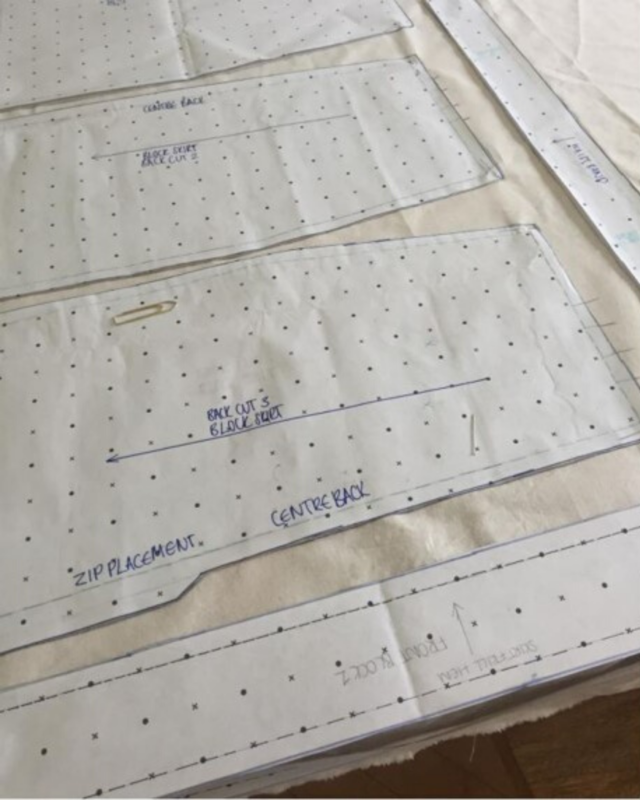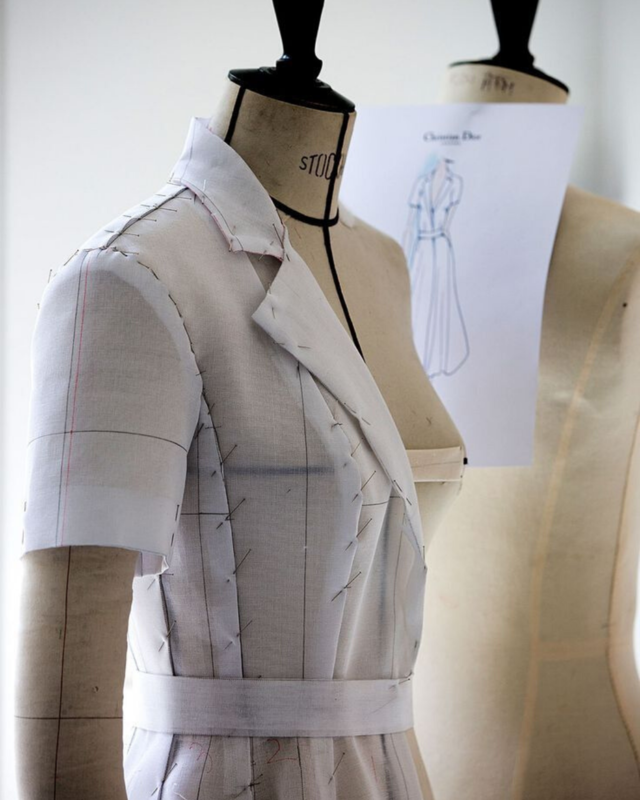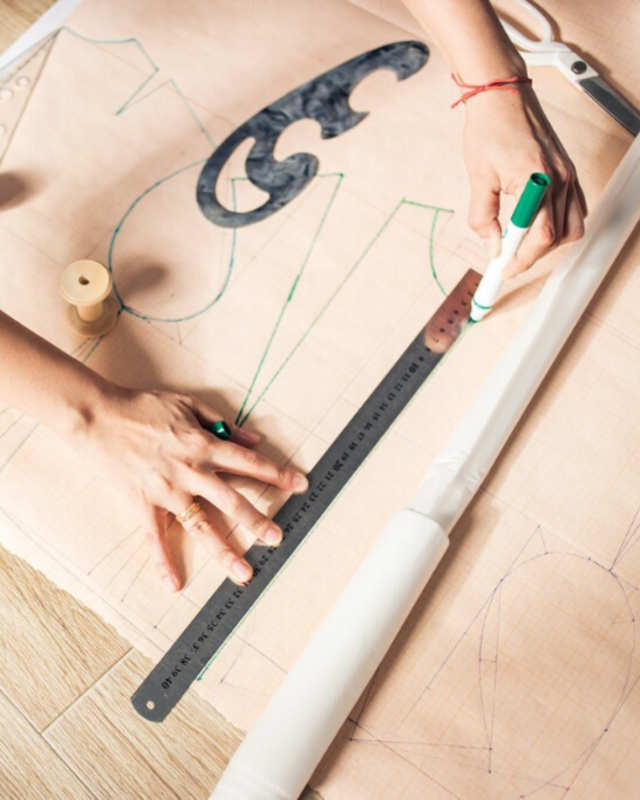When it comes to manual pattern cutting there are two types – flat pattern cutting or 3D pattern cutting (also known as draping on the stand). Whilst many pattern cutters are skilled at flat pattern cutting, not all are as experienced in draping and, depending on the complexity of the garment, they may need some extra training.
If you’re interested in becoming a pattern cutter, it’s important to know the difference between the two.
Flat pattern cutting
Flat pattern cutting is the method of creating a 2-dimensional pattern on a flat surface. Typically using paper to create the pattern, the pattern cutter will usually use blocks - a standard pattern based on specific measurements - to draft or draw out the pattern.
The pattern will consist of different pieces, often made up of straight lines (to represent the grain of the fabric) and curves (to represent the body) to form the basis of the design. Once the pattern is drafted, a toile is usually sewn to give a rough idea of how the garment will look. With technical notes and guidance, this pattern and toile will then be used by the sample machinist to create a first sample of the garment.

Image source: iStock
3D pattern cutting
Also known as draping on the stand, a pattern cutter uses the 3D method to bring a pattern to life – using calico fabric, or in some cases the final fabric. To drape on the stand the pattern cutter will use a mannequin to manipulate the fabric around it and use pins to hold it together until they get the desired result. By doing this, they will get more of an idea of how the fabric will hang and react to the pattern they want to create.
Once the cutter is happy with the pattern it is marked up with notches and annotations of what each piece is, before being flattened, measured and traced. It is from this pattern a toile is created and the first fittings commence.

Image source: Vogue
Flat Pattern vs. 3D Pattern Cutting
Both flat and 3D pattern cutting have their pros and cons, and some would argue that you can’t have one without the other. Flat pattern cutting is the most traditional way of creating a pattern and is usually considered to be more accurate because you already have the measurements from blocks. Another benefit of flat pattern cutting is that by using blocks, you already have the basis of the pattern and can make alterations to it to create a new design quickly and easily.
Draping on the stand may not be as accurate as flat pattern cutting and can be more time consuming, but those experienced in this method would argue it is more creative and gives the pattern cutter a better understanding of design, shapes and proportions. It’s also useful for extremely complex designs because it’s a good way of foreseeing any technical issues before they arise – especially if the final fabric is being used.

Image source: iStock
Considering the benefits of both flat and 3D pattern cutting, which method do you prefer and why?
If you are interested in learning more about fashion design, take a look at our course options available.
